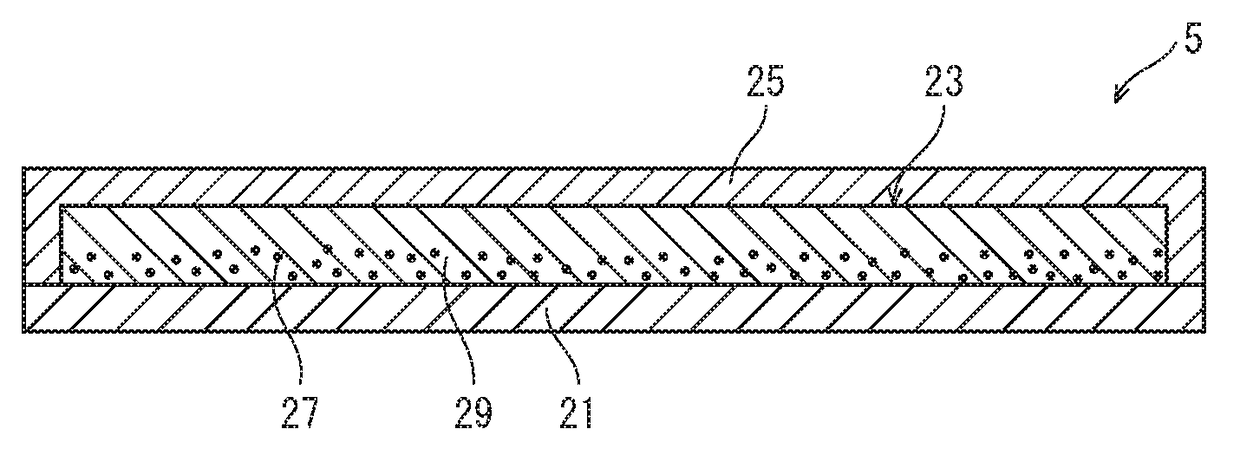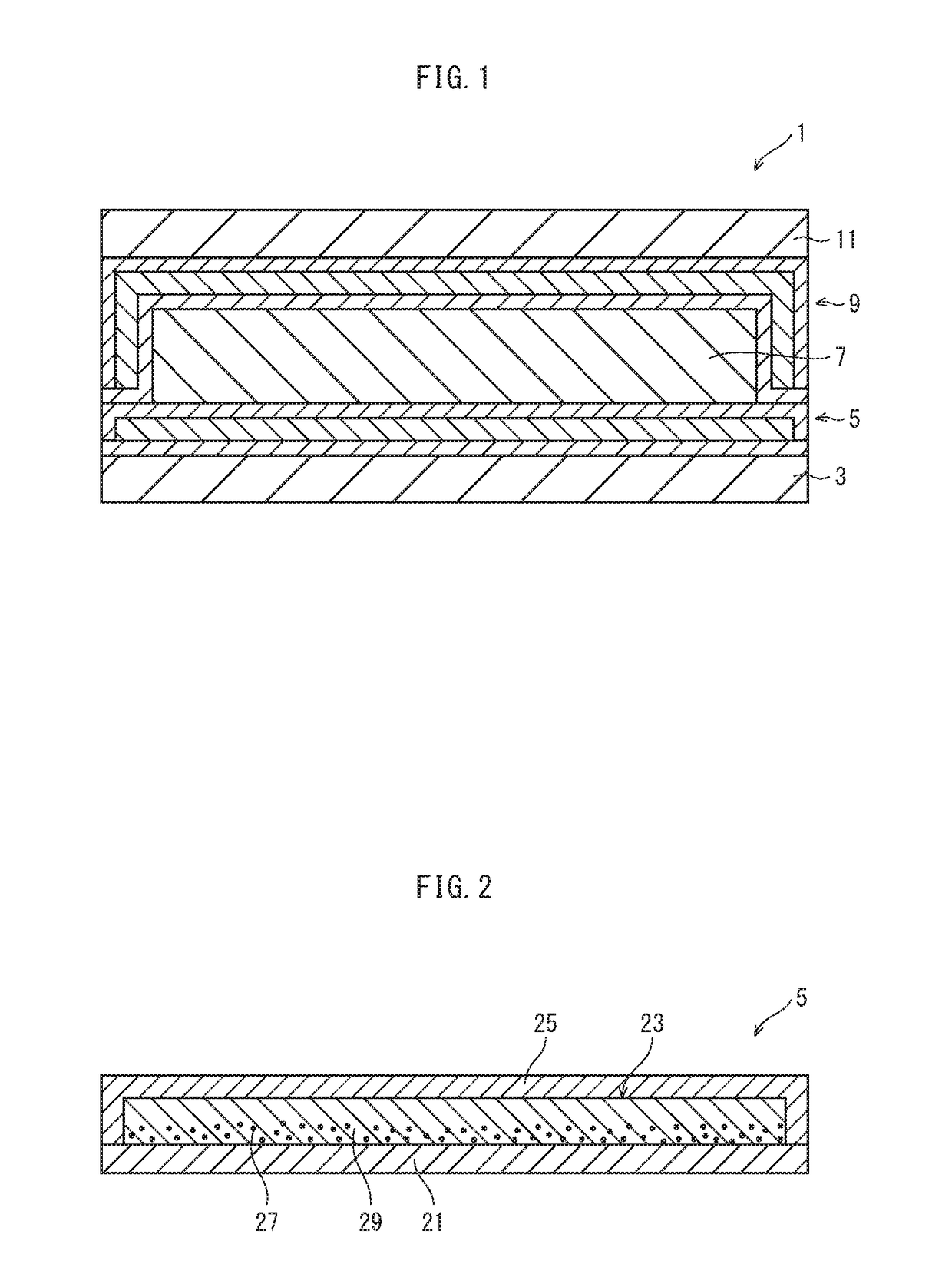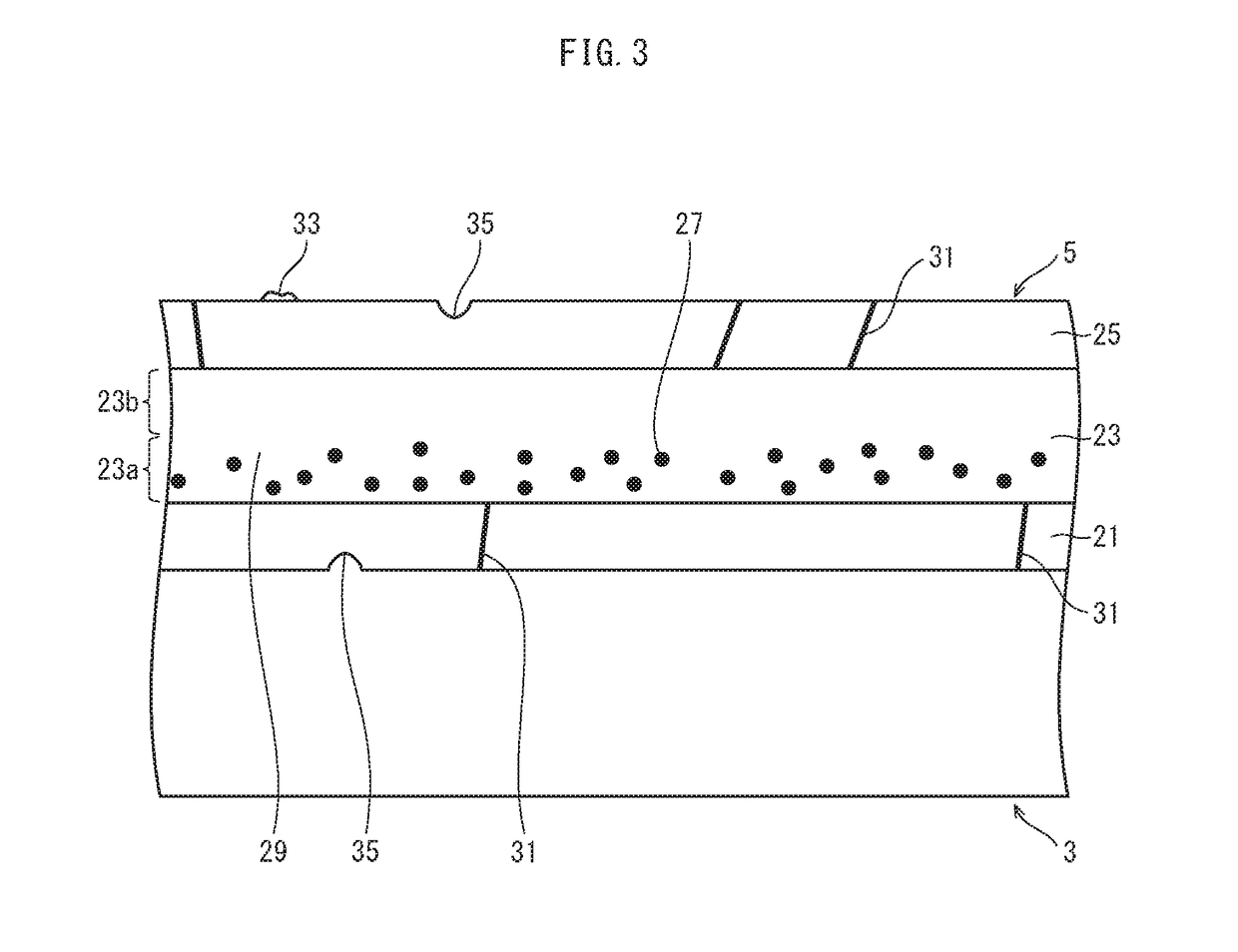Organic EL device
a technology of electroluminescence and organic el, which is applied in the direction of basic electric elements, semiconductor devices, electrical apparatus, etc., can solve the problems of change in light emission color, inability to emit light, and the el substrate typically does not function much as a barrier against moisture, so as to reduce the probability of moisture absorbed/adsorption by the hygroscopic agent reaching the organic el layer, the effect of preventing the number of defects
- Summary
- Abstract
- Description
- Claims
- Application Information
AI Technical Summary
Benefits of technology
Problems solved by technology
Method used
Image
Examples
first embodiment
[0032]In a first embodiment, description is given on an outline of a device including a functional layer undergoing functional degradation through moisture sorption.
[0033]Description is given here on an organic EL device that includes an organic EL layer as a functional layer.
1. Overall Structure
[0034]FIG. 1 is a cross-sectional diagram of the organic EL device of the first embodiment.
[0035]The organic EL device 1 includes a display unit 7. The display unit 7 includes an anode electrode, a cathode electrode, and an organic EL layer disposed between the anode electrode and the cathode electrode.
[0036]The organic EL device 1 includes hygroscopic layers 5 and 9 respectively disposed on the two main surfaces of the display unit 7, and thus a hygroscopic layer is disposed on at least one main surface of the display unit 7. In other words, the display unit 7 is sandwiched between the hygroscopic layers 5 and 9.
[0037]Specific description is given below.
[0038]As shown in FIG. 1, the organic...
second embodiment
[0131]In a second embodiment, description is given on an organic EL display device.
1. Outline of Structure
[0132]The following describes the outline of the structure of an organic EL display device 101 pertaining to the second embodiment with reference to FIG. 7 and FIG. 8.
[0133]FIG. 7 is a schematic block diagram illustrating the overall structure of the organic EL display device 101 pertaining to the second embodiment. FIG. 8 is a schematic plan view diagram illustrating the arrangement of subpixels 110a-110c in an organic EL display panel 110.
[0134]As shown in FIG. 7, the organic EL display device 101 includes the organic EL display panel 110 and a drive / control unit 120 that is connected to the organic EL display panel 110. The organic EL display panel 110 is an organic EL display panel that employs electroluminescence occurring with an organic material. The organic EL display panel 110 here has a curved display surface.
[0135]As shown in FIG. 8, subpixels 110a-110c are two-dimens...
third embodiment
[0166]The hygroscopic layer is effective with respect to a function unit undergoing some kind of functional degradation through moisture sorption. In the second embodiment, a resin film having flexibility is used as the base 137. However, a conventional glass material may be used as base material. In a third embodiment, description is given on an organic EL device (organic EL display device) whose base is made of a glass material and which includes a hygroscopic layer disposed at a surface portion thereof.
1. Overall Structure
[0167]FIG. 10 is a cross-sectional view showing one subpixel of an organic EL display panel 201.
[0168]In the organic EL display panel 201, a display unit 205 is disposed on a base 203 and is covered with a hygroscopic layer 207. A plurality of subpixels are two-dimensionally arranged in the display unit 205 in plan view, as in the second embodiment. Further, the third embodiment is similar to the second embodiment in terms of the basic structure of the subpixels...
PUM
 Login to View More
Login to View More Abstract
Description
Claims
Application Information
 Login to View More
Login to View More - R&D
- Intellectual Property
- Life Sciences
- Materials
- Tech Scout
- Unparalleled Data Quality
- Higher Quality Content
- 60% Fewer Hallucinations
Browse by: Latest US Patents, China's latest patents, Technical Efficacy Thesaurus, Application Domain, Technology Topic, Popular Technical Reports.
© 2025 PatSnap. All rights reserved.Legal|Privacy policy|Modern Slavery Act Transparency Statement|Sitemap|About US| Contact US: help@patsnap.com



